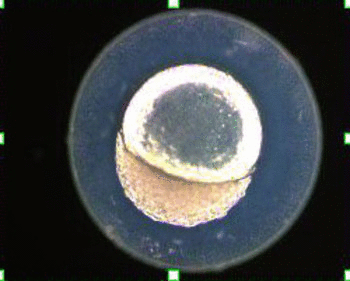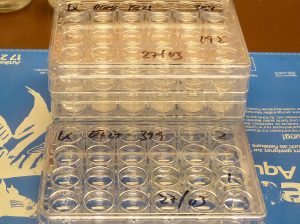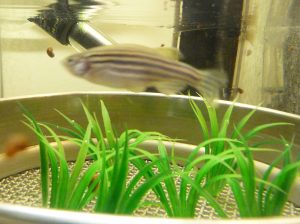Fish Embryo Test
Assessment of acute toxicity for fishes
The fish embryo acute toxicity test according to the DIN ISO 38415-T6 1996-12 norm is a procedure that functionally replaces the fish acute toxicity test (OECD TG 203).
This test enables the detection of harmful effects before structures for perceiving pain, such as the central nervous system, skin or peripheral sensory organs, have been completely formed.
The fish embryo test may be employed with the same sensitivity to a broader spectrum of investigations.

Thus it is also possible to use it with process water or partial current water prior to sewage treatment, contributing to the optimization of the water treatment. Employees of the GOBIO GmbH were decisively involved in the DIN task force during development of this test.
The test organisms for this assay are embryos of zebrafish (Danio rerio Hamilton-Buchanan). This species presents a short juvenile phase, reaching sexual maturity in about 6 months. They reproduce throughout the year, and females lay eggs several times each week. Main features of the embryonic development follow a similar pattern in all vertebrates, including humans, and are based on the same genetic program.
In this test, eggs of zebrafish are exposed to a dilution series of waste water samples, and after 48 hours exposure to the samples the not acutely toxic dilution step is determined. The development of fertilized eggs may be affected by substances present in the waste water. Asides from death, defined failures in the embryonic development (e.g. somite formation, heart beat) are evaluated as endpoints that may lead to death. Furthermore, evidence for chronic effects of substances (e.g. malformation of the vertebral column, delayed or incomplete pigmentation, suppression of the development of the head region) may be recorded.
Through the evaluation of the fish embryo test by experienced developmental biologists, an analysis of deleterious effects is possible along with the registration of acute toxicity data. The fish embryo test should therefore be perceived as a central instrument of ecotoxicological investigations for the preventive environmental protection.


